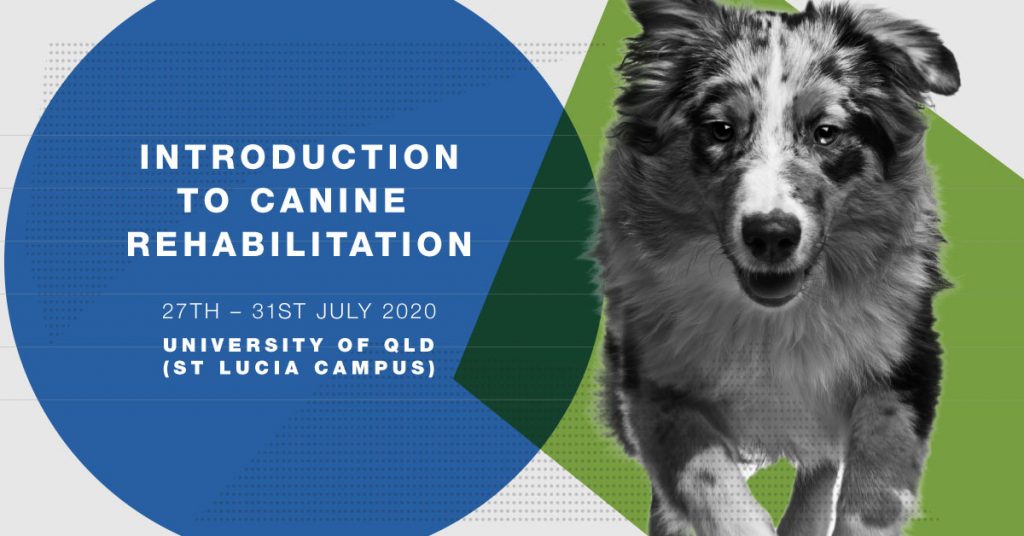Thank you to Dr Janet Van Dyke from Canine Rehabilitation Institute for preparing these wonderful Vet Tips for us. Dr Van Dyke is the lead educator for the Introduction to Canine workshop in July 2020. This workshop is open to veterinarians, physical therapists, and vet techs & nurses. Places are limited and filling so register today to secure your place!
Tip 1
Using physiotherapeutic evaluation techniques, veterinarians can now assess patients’ posture, muscle strength, flexibility, and passive range of motion, leading to the creation of a more detailed differential diagnosis. Testing methods for strength are being validated now, using techniques well established in human medicine. Flexibility is quite different from range of motion in that flexibility looks specifically at the extensibility of muscle tissue. Range of motion is determined by the arthrokinematics of the joint. Physiotherapy has techniques for assessing and correcting abnormal arthrokinematics.
Tip 2
Arthrokinematics differ from osteokinematics. The former looks at the interaction of joint surfaces throughout the range of motion. The latter looks at the movement of bones around the joint axis. Veterinarians have been trained to asses only osteokinematics. However, abnormal arthrokinematics are what cause a lack of normal range of motion. Understanding correct arthrokinematics and how to restore them is essential to regaining appropriate range of motion. Physiotherapists use a set of grades to score the arthrokinematic movement for any joint. Limitations, often caused by joint capsule shortening, can be corrected using techniques known as joint mobilizations.
Tip 3
The choice of therapeutic exercises is determined by the weight-bearing status of the patient. All patients are given exercises to work on proprioception, strength, flexibility and endurance. The specific exercises from each of these categories is chosen based upon weight-bearing status and progression from prior exercise sessions. Until the patient is fully weight-bearing, exercise selection is focused upon functional weight-bearing exercises rather than strengthening. These exercises include balance and proprioception training using rocker boards and wobble boards.
Tip 4
Physical modalities include cryotherapy, heat therapy, light (Laser) therapy, ultrasound, and neuromuscular electrical stimulation. These modalities are used to prepare the tissues for manual therapies and therapeutic exercise. The parameters for each are chosen based upon the acuity of the injury to the tissues being treated. Laser therapy is dosed in Joules per centimeter squared. The depth of penetration of Laser is determined by the wavelength of the device (measured in nanometers) while the rate of energy delivery is determined by the power of the device (measured in milliwatts). The depth of penetration of ultrasound is determined by its frequency. Practical hands-on experience makes all the difference in how creative and how successful one can be when applying the physical modalities in a treatment plan.
Join VetPrac on the 27-31st of July 2020 for Introduction to Canine Rehabilitation. Every patient recovering from injury or surgery benefits from rehabilitation. This 5-day workshop introduces participants to traditional physical therapy and integrative therapies as well as ways they can be incorporated into a veterinary practice.
Registrations are open to veterinarians, physiotherapists, veterinary technicians and nurses. Vet Techs & Nurses must submit an Employer Letter indicating there is a veterinarian or physical therapist in their practice who is either certified in canine rehabilitation or registered for this workshop.
Class size is limited with tutelage by the extraordinary team from Canine Rehabilitation Institute. We don’t know when they’ll be returning again so book now to secure one of the final remaining spots in Introduction to Canine Rehabilitation!

